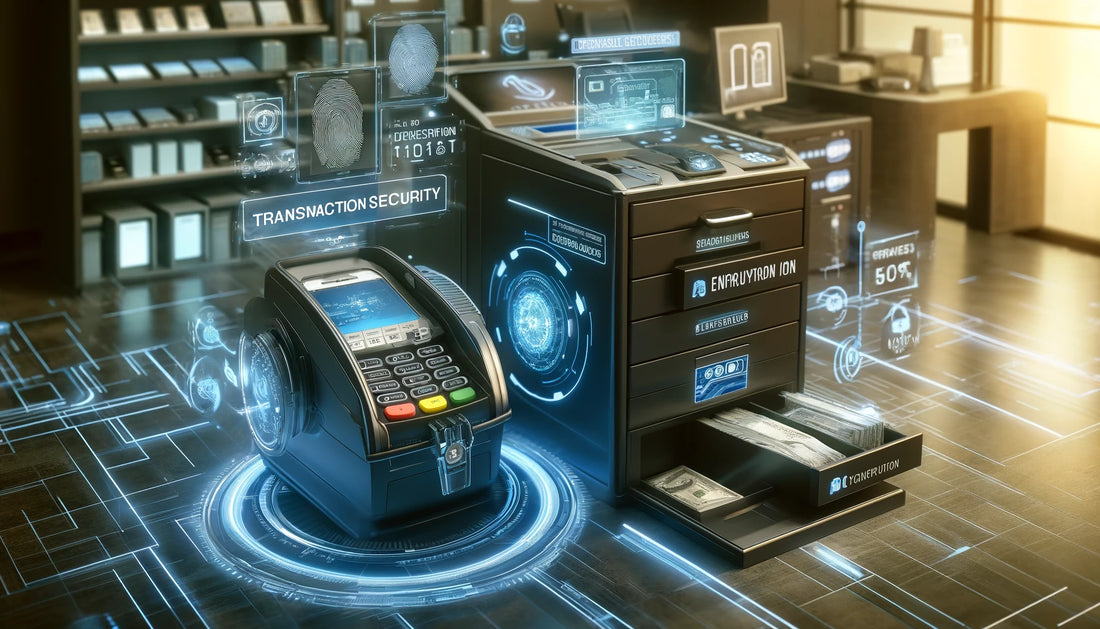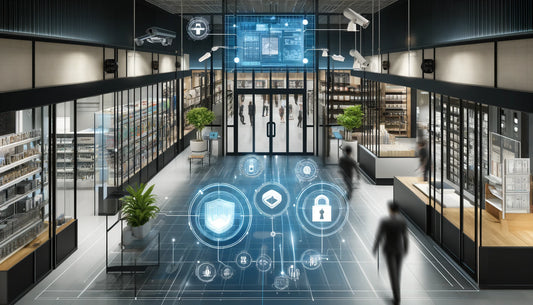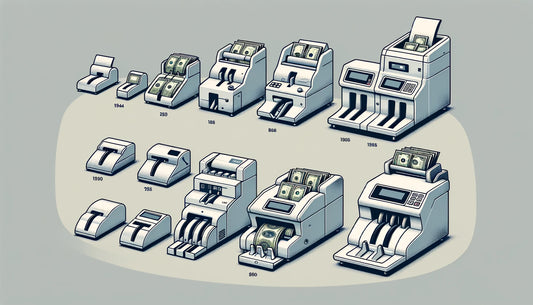Enhancing Transaction Security with Modern Technology
Introduction
In today's digital age, securing transactions has become paramount. As businesses increasingly shift towards online and digital platforms, the necessity for robust transaction security measures intensifies. This blog explores the various technologies that fortify the security of transactions, detailing how they operate and why they are essential for maintaining the integrity of business operations and building trust with customers.
The Importance of Secure Transactions in Business
Secure transactions are the backbone of any successful business operation in the digital era. They not only protect sensitive customer data but also safeguard the business against potential financial losses and reputational damage caused by security breaches. With cyber threats evolving rapidly, the implementation of advanced security measures is not just advisable but imperative. Enhanced transaction security also ensures compliance with global regulatory requirements, which can vary significantly and carry stiff penalties for non-compliance.
Moreover, in the age of information, customers are increasingly aware of the risks associated with online transactions. They tend to favour businesses that can demonstrate secure handling of personal and financial information. Therefore, investing in sophisticated transaction security technologies can be a differentiating factor, helping businesses to stand out in a competitive market by fostering a sense of reliability and trustworthiness among its clientele.
Overview of Transaction Security Technologies
Transaction security technologies encompass a broad range of tools designed to protect data integrity, prevent fraud, and ensure the authenticity of transactions. At its core, these technologies include encryption, tokenisation, and the use of secure hardware and software systems designed to shield data from unauthorised access. Each technology plays a specific role in the security architecture, and understanding these can help businesses select the right combination to meet their unique security needs.
Encryption is the process of converting information into a secure format that is unreadable to unauthorised users, which ensures that even if data is intercepted, it cannot be deciphered. Tokenisation replaces sensitive data elements with non-sensitive equivalents, called tokens, which are useless outside of the transactional context. Both these technologies are supplemented by secure hardware systems that provide a physical and software-based barrier to breach, making them integral components of an end-to-end security strategy.
Understanding Encryption and Its Role in Security
Encryption is undeniably the cornerstone of modern data security, especially in the context of transaction security. It involves the encoding of data so that only authorised parties can access it. This is achieved using sophisticated algorithms that scramble data into an unreadable format. Keys are used to lock (encrypt) and unlock (decrypt) the data, ensuring that only those with the correct key can access the information in its readable form.
This technology is critical not only for protecting data as it travels across networks but also for ensuring data remains secure when stored. As transaction volumes grow and as data traverses global networks, the role of encryption has expanded, becoming more complex and integral to security strategies. It protects against a range of threats, from man-in-the-middle attacks during data transmission to unauthorised access to stored data.
The Advantages of Tokenisation in Transaction Security
Tokenisation plays a critical role in protecting sensitive data such as credit card numbers and personal identification information. By substituting sensitive data with non-sensitive tokens, businesses can reduce the impact of a data breach because tokens cannot be reverse-engineered back into their original forms. This not only enhances security but also simplifies the compliance with industry standards and regulations such as PCI DSS for payment security.
Tokenisation also offers flexibility in managing data. For example, tokens can be formatted to maintain the last four digits of a credit card number for customer service purposes while keeping the rest of the data secure. This blend of security and utility makes tokenisation an appealing option for businesses looking to secure their transaction processes without sacrificing operational efficiency.
Biometric Verification Technologies
The integration of biometric verification technologies into transaction security frameworks has marked a significant advancement in the field. Biometric systems use unique physical characteristics, such as fingerprints, facial recognition, and even voice patterns, to verify individuals' identities. This method not only tightens security but also enhances user convenience, streamlining the authentication process without compromising safety.
Biometric technologies are particularly effective in combating identity fraud, as biometric traits are extremely difficult to replicate or steal compared to traditional passwords or PINs. The use of biometrics in mobile banking and payment apps is a testament to their growing popularity, providing a high level of security for mobile transactions, which are rapidly increasing in volume.
Role of Blockchain in Secure Transactions
Blockchain technology offers a novel approach to transaction security through its decentralised and transparent nature. Each transaction is recorded as a block and linked to previous transactions, creating a chain that is virtually impossible to alter without detection. This immutability makes blockchain an excellent tool for securing transactions across various industries, from finance to supply chain management.
The technology's ability to provide a verifiable and permanent record of transactions reduces the possibility of fraud and unauthorised intervention. Blockchain's potential extends beyond cryptocurrency; it is also being explored in areas such as voting systems, intellectual property rights management, and secure sharing of medical records, reflecting its
versatility and wide-ranging applicability in enhancing transaction security.
Implementing Secure Point-of-Sale Systems
Point-of-Sale (POS) systems are critical touchpoints where transaction security must be stringent. Modern POS systems are equipped with advanced security features like end-to-end encryption and tokenisation, protecting data from the moment it is entered into the system until it completes the transaction process. Additionally, compliance with standards such as EMV (Europay, MasterCard, and Visa) helps safeguard against fraud by requiring chip card technology, which is harder to clone than traditional magnetic stripe cards.
Further securing these systems are compliance requirements with the Payment Card Industry Data Security Standard (PCI DSS), which sets a benchmark for all entities handling credit card information. Adhering to these standards not only protects the data but also builds consumer confidence in the business's transaction processes.
The Impact of AI and Machine Learning on Fraud Detection
Artificial intelligence (AI) and machine learning (ML) are revolutionising fraud detection in transaction security. These technologies can analyse vast amounts of transaction data in real time, identifying patterns and trends that might indicate fraudulent activity. This capability allows businesses to respond quickly to potential threats, often before any harm is done.
AI systems learn from each transaction, continually improving and adapting their detection algorithms. This dynamic approach to fraud detection is far superior to older, rule-based systems that can be slow to react to new fraud strategies. By implementing AI and ML, businesses can stay a step ahead of fraudsters, ensuring their transaction processes remain secure and trusted.
Cybersecurity Measures for Transaction Systems
Cybersecurity is a broad field that encompasses a variety of strategies and tools designed to protect networks, devices, programs, and data from attack, damage, or unauthorised access. In the context of transaction security, this means implementing firewalls, antivirus software, intrusion detection systems, and comprehensive cybersecurity protocols to create a multi-layered defence against potential cyber threats.
Regular security audits and updates are also crucial to maintaining the integrity of transaction systems. As cyber threats evolve, so too must the security measures that protect against them. Training employees in cybersecurity best practices is another essential step, ensuring that all levels of the organisation contribute to the security of transaction processes.
Regulatory Compliance and Transaction Security
Compliance with regulatory requirements is a significant aspect of transaction security. Regulations such as the General Data Protection Regulation (GDPR) in the EU, and similar laws in other regions, dictate how data should be handled and protected. Non-compliance can lead to severe penalties, including hefty fines and damage to a company's reputation.
Businesses must understand these regulations and implement systems and processes that comply fully with them. This not only ensures legal compliance but also enhances security protocols, as many regulatory requirements are designed to promote best practices in data protection and security.
Future Trends in Transaction Security Technology
As technology evolves, so too do the methods to secure transactions. Future trends might include the further integration of quantum computing, which could revolutionise encryption methodologies, making current encryption techniques obsolete. Additionally, the increasing interconnectedness of devices, known as the Internet of Things (IoT), will require new approaches to security, particularly in terms of scalability and complexity.
Further advancements in biometric technology, including vein pattern recognition or behavioural biometrics, are likely to enhance personal authentication processes, making transactions even more secure and personalised. As these technologies develop, businesses will need to stay informed and ready to adopt new methods to maintain high levels of security.
Conclusion
In the rapidly evolving digital landscape, the security of transactions is more critical than ever. Businesses must employ a comprehensive suite of modern technologies to ensure the security of their transactions and the trust of their customers. By staying at the forefront of technology trends and regulatory requirements, businesses can protect themselves and their customers from the ever-present threat of cybercrime.



